and help the keeping properties of bread. If you wish to use
The Basics of Breadmaking
margarine based on vegetable oil, ensure that you use the
An understanding of ingredients and their interaction is
regular kind. Avoid the “light” varieties as they contain quite
essential to good breadmaking. This short guide will help you
large amounts of water which will adversely affect the bread. If
understand some of the processes and the materials used.
you are in doubt, read the small print on the container; this will
FLOUR
indicate whether the product is suitable for breadmaking.
is the essential ingredient. It should be fresh, and stored in
When substituting oil for butter, margarine or solid cooking
cool, dry conditions, preferably in an airtight jar. Use only
fat, reduce the amount of liquid by around ¾ tbs. to
breadmaking flour. General-purpose flours do not contain
compensate for the extra liquid content of the oil.
enough gluten to produce well structured bread.
As you will see from our recipes, it is good practice to cut butter
Wholemeal flour contains the whole wheat grain. This results
and solid fats into small pieces before using them.
in heaver denser loaves than bread made with white bread
Low fat bread can be made by substituting natural low fat
flour, and takes longer to rise - use the Wholemeal settings for
yoghurt for some or all the fat in the recipe, in equal amounts.
best results.
Apple purée may also be used. Once again, monitor the
Other flours such as rye are often added to bread flours to
dough and adjust accordingly.
make speciality loaves. As these flours contain no gluten they
SUGAR
cannot be used entirely on their own.
Sugar provides food for the yeast, helps bread to rise and
Flours vary - millers all have their own special methods, and
improves flavour, structure and colour. Almost any kind of
age and storage play their part. Although you should always
natural sweetener can be used, - all the various sugars, corn
follow the recipe carefully there are occasions when you may
and maple syrup, honey, etc. Once again, when using liquid
have to adjust the dough. You may do this a few minutes into
sweeteners to replace sugar, reduce the amount of water
the kneading cycle. Open the Breadmaker lid and gently
slightly to compensate.
touch the dough. It should feel very slightly sticky. If it is sloppy,
Artificial sweeteners are not suitable for breadmaking.
add a little flour (½ -1 tablespoon). Allow this to work in and
SALT
re-check if necessary. If the dough is too dry, add the same
amount of lukewarm water. Re-check if necessary.
Salt in bread is NOT just a matter of taste! Salt restrains the
growth of the yeast, and improves elasticity and structure. If
As you gain experience, you will get to know the feel of good
you reduce or eliminate salt from the bread it will rise
dough. It should be soft and smooth with the faintest sticky
excessively - if you use too much salt the loaf will not rise
feel, but should leave no residue when turned out of the pan,
enough. Use common table salt.
as in our recipes for doughnuts and other recipes blended on
the Dough programme.
When adding salt to the bread pan, keep it away from the
yeast by introducing it at one corner. If the yeast comes into
The only time you can adjust the quality of the dough is during
premature contact with salt, the bread will not rise properly.
the kneading cycle. Once baking commences do not lift the lid
This situation is obviously more important when using the
or the bread may spoil.
delay timer.
MILK
YEAST
Whole, semi-skimmed or skimmed milk can be used in
Yeast is a micro-organism which feeds on sugars and starches
breadmaking but it should always be added lukewarm.
in the bread mix producing carbon dioxide gas which in turn
Refrigerated milk must be heated to around 27ºC (80ºF).
causes the bread to rise.
Never heat milk above 37ºC (98ºF) as this can cause
problems with yeast.
We recommend the use of dried fast-acting yeast which is
intended for breadmakers. The instructions on the sachet will
Milk can usually be substituted for water in most recipes, but
tell you if the yeast is suitable for breadmakers. Easy-blend
the quantity may need to be adjusted - usually slightly higher. If
yeasts are readily available from branches of Tesco and other
dried milk features in the recipe, leave it out when substituting
good grocers.
milk for water.
When adding yeast, be especially careful to get the quantity
LIQUID QUANTITIES
correct otherwise you could have a disaster on your hands,
Flour is absorbent, its texture will vary to some extent with the
especially if you add too much!
prevailing atmospheric conditions. The amount of liquid may
Note: Some ingredients, especially garlic and cinnamon can
have to be adjusted if the conditions in your kitchen are
spoil the quality of your bread if added in excess. Never be
excessively dry or humid. If there is too much water in the
over generous with such additions, use the amounts
bread it will not rise properly, even to the point of collapse.
recommended in the recipes.
Insufficient liquid will result in a poorly structured, lumpy loaf.
When baking items containing milk and onions, it is advisable
If you are in any way unsure, it is good policy to monitor the
not to use extended timer settings
dough while it is kneading, using the notes above.
AND FINALLY
BUTTER, MARGARINE, COOKING FAT AND OIL
HAPPY BREADMAKING!
These are interchangeable in bread making. Fats add flavour
$ Close supervision is necessary when this appliance
is used near children.
$ When selecting the location for your machine,
ensure that children do not have access to it.
$ Make sure that the power cable does not touch any
hot surface and that it does not overhang a table
edge.
$ Check the machine and the cable regularly for
damage. If there is damage of any kind, the
$ Directly after bread making the appliance is HOT.
machine should not be used. Do not repair the
Always use oven gloves when touching the
machine yourself, but rather consult an authorized
Breadmaker or the bread pan after baking.
expert.
$ Unplug the Breadmaker after use and allow it to
$ Do not cover the Breadmaker when in use.
cool before handling or cleaning any parts. Pull on
$ Never use the machine unsupervised!
the plug, not on the cable.
$ Do not use attachments or accessories not
$ This Breadmaker is for normal household use only.
recommended by the manufacturer.
Do not use it for professional catering.
$ Do not dent or damage the bread pan. The
$ Do not use the Breadmaker outdoors.
Breadmaker will not operate properly if damaged.
$ Do not immerse the Breadmaker or the electrical
$ When baking bread, never bake amounts greater
cord or plug in water or liquids.
than the maximum recommended in the recipes
$ Do not use the Breadmaker near a source of heat or
accompanying this manual. If you do, the bread
on an unstable surface.
may not be baked evenly and the dough could
overflow.
$ Use the Breadmaker only on heat-resistant surfaces.
If the work surface is excessively smooth the
$ Do not use the Breadmaker for any purpose not
breadmaker should be placed on a non-slip mat.
expressly specified in this manual.
$ Make sure the Breadmaker is not exposed to direct
$ There are no user serviceable parts in your
sunlight.
Breadmaker. Unauthorised dismantling or servicing
will void the product warranty.
$ At least 100mm clearance must be provided on all
sides of the Breadmaker.
CAUTION
RISK OF ELECTRIC SHOCK DO NOT DISMANTLE
!
The lightning flash with arrowhead symbol, within an equilateral triangle,
is intended to alert the user to the presence of uninsulated dangerous
voltage within the product’s enclosure that may be of sufficient magnitude
to constitute a risk of electric shock.
The exclamation point within an equilateral triangle is intended to alert
the user to the presence of important operating and maintenance
(servicing) instructions in the literature accompanying the appliance.
Safety Guide
Page 2
Page 11
Please read all the instructions and familiarise yourself If any items are missing or damaged, contact your
with the features and operation of your breadmaker nearest Tesco store for assistance.
before using the appliance. Make sure you read all the
Retain the packaging in case you wish to transport the
safety notes carefully.
appliance safely at a later date. If you dispose of the
packaging, do so in accordance with any recycling
Before using this appliance ensure that the voltage of
regulations in your area.
your electricity supply is the same as that indicated on
the rating plate of the appliance.
Note: In manufacture some parts of the Breadmaker are
lightly greased. When the appliance is first used, there
Unpacking the Breadmaker
may be some vapour emission. This is harmless and will
In the box you should find:
soon disappear.
$ The breadmaker including the bread pan and
kneading paddle
$ Measuring cup and spoon
Preliminaries


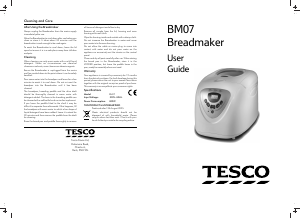

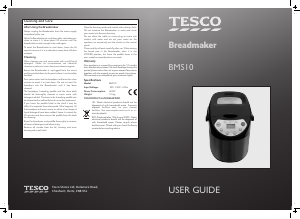
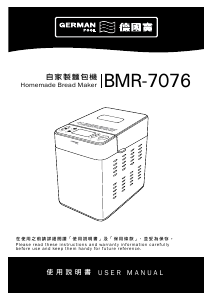
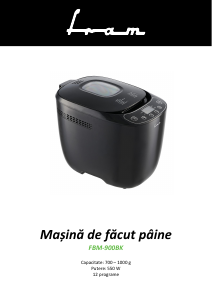
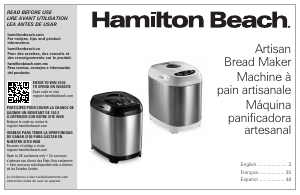
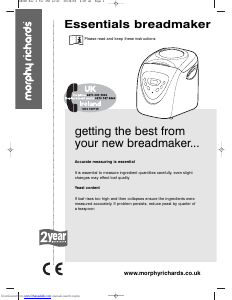
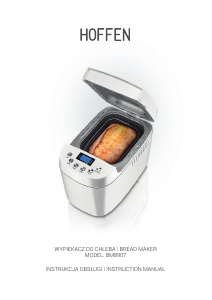
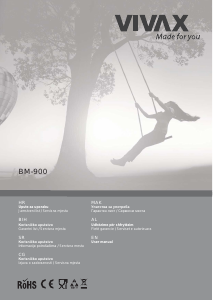
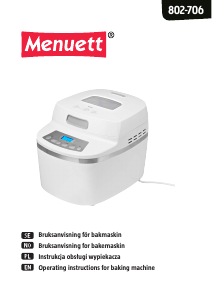
Join the conversation about this product
Here you can share what you think about the Tesco BM07 Bread Maker. If you have a question, first carefully read the manual. Requesting a manual can be done by using our contact form.